
How to Use DFrobot microSD: Examples, Pinouts, and Specs
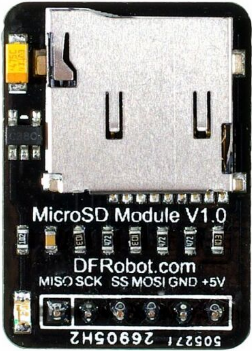
 Design with DFrobot microSD in Cirkit Designer
Design with DFrobot microSD in Cirkit DesignerIntroduction
The DFrobot microSD card module is a compact and efficient solution for adding data storage capabilities to embedded systems. Designed for use with microcontrollers, this module allows for seamless data storage and retrieval using microSD cards. It supports communication via the SPI protocol, making it compatible with a wide range of development boards, including Arduino, Raspberry Pi, and other microcontroller platforms.
Explore Projects Built with DFrobot microSD
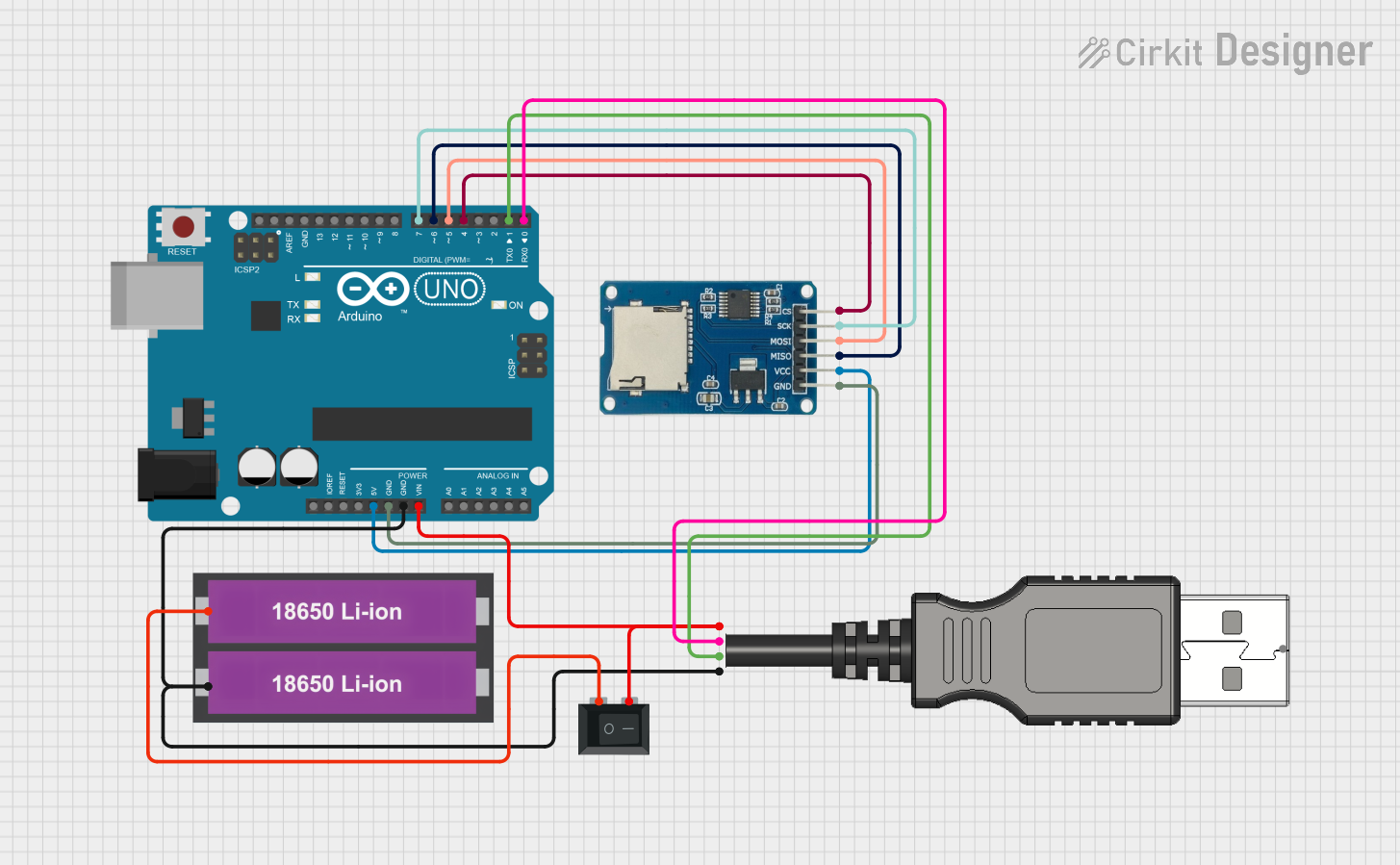
 Open Project in Cirkit Designer
Open Project in Cirkit Designer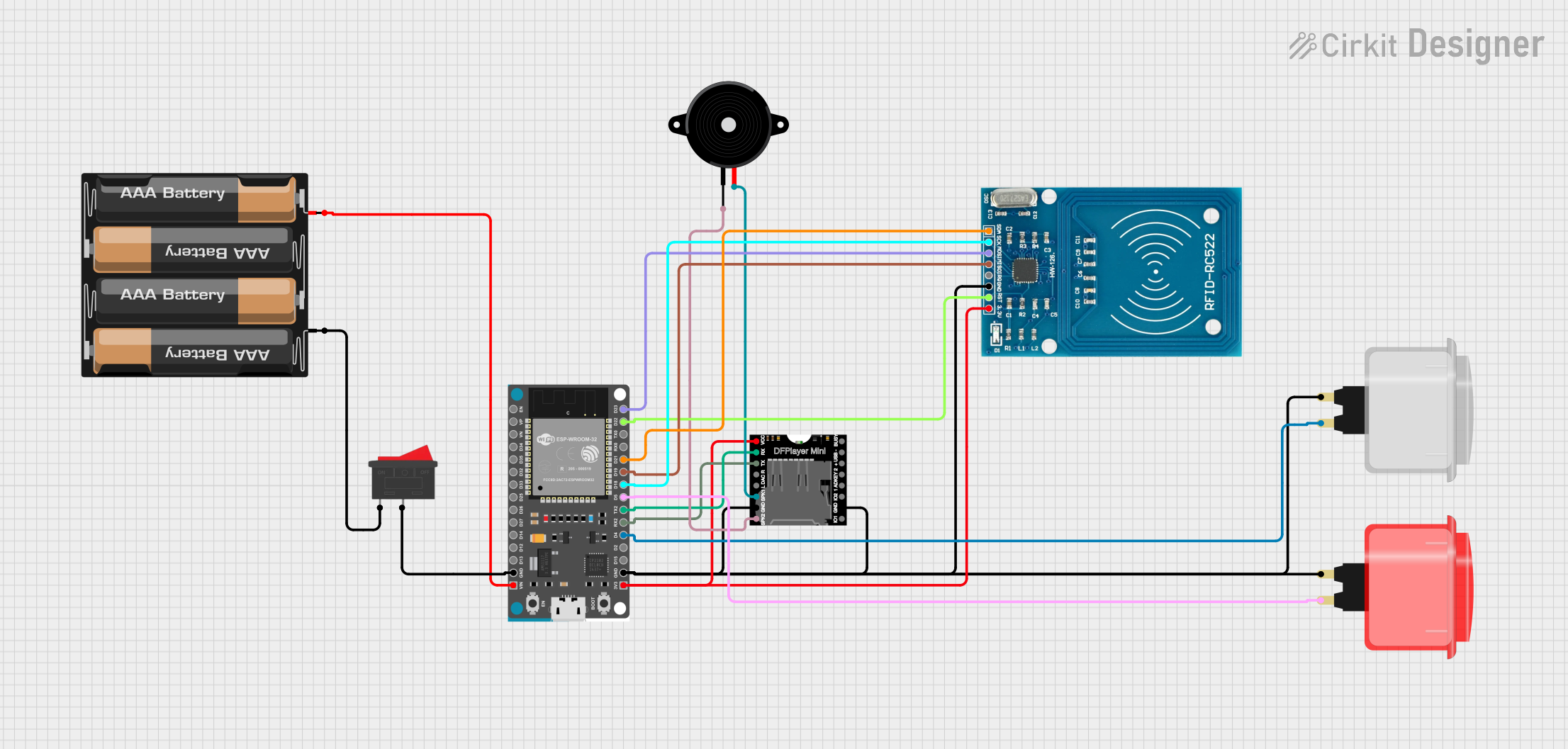
 Open Project in Cirkit Designer
Open Project in Cirkit Designer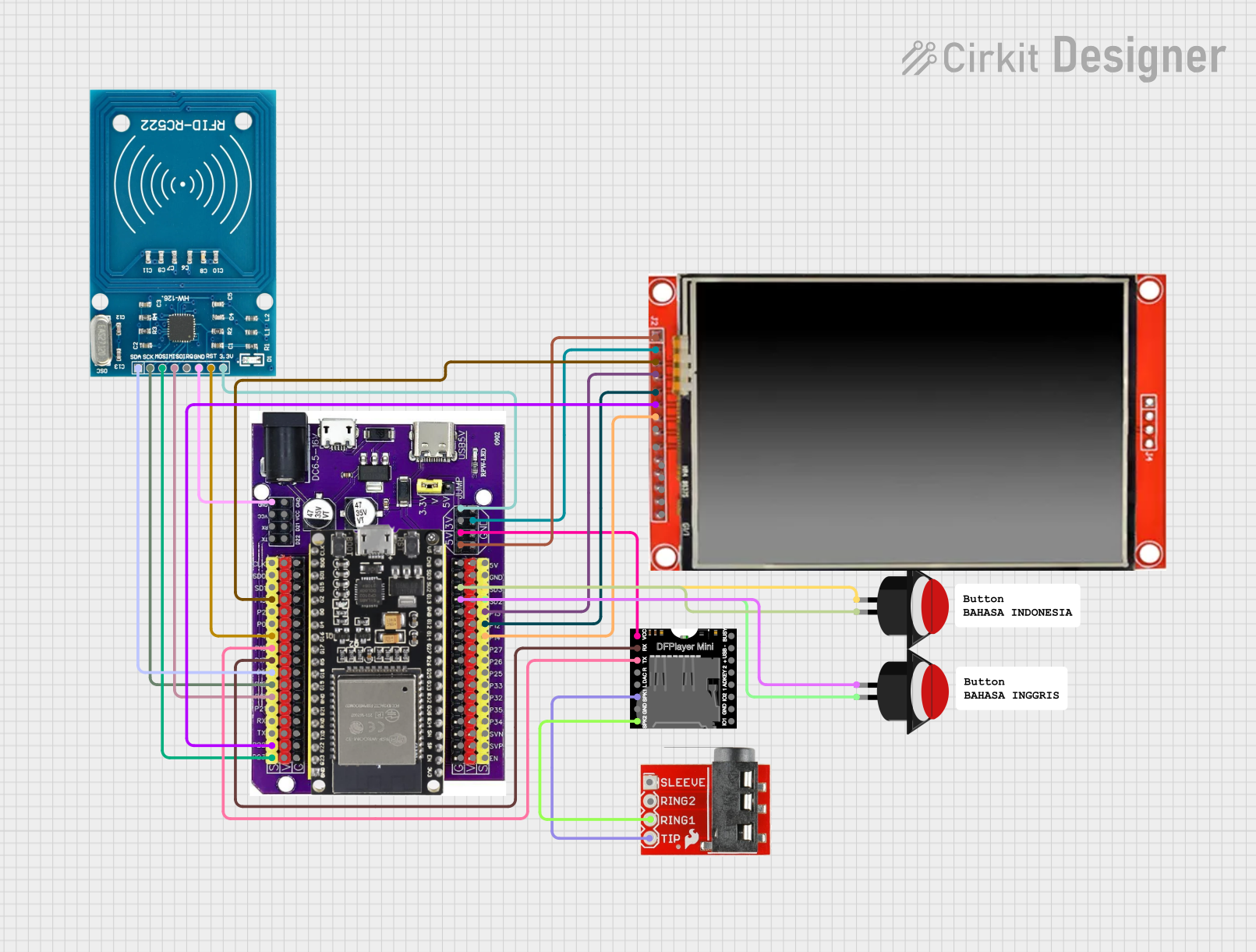
 Open Project in Cirkit Designer
Open Project in Cirkit Designer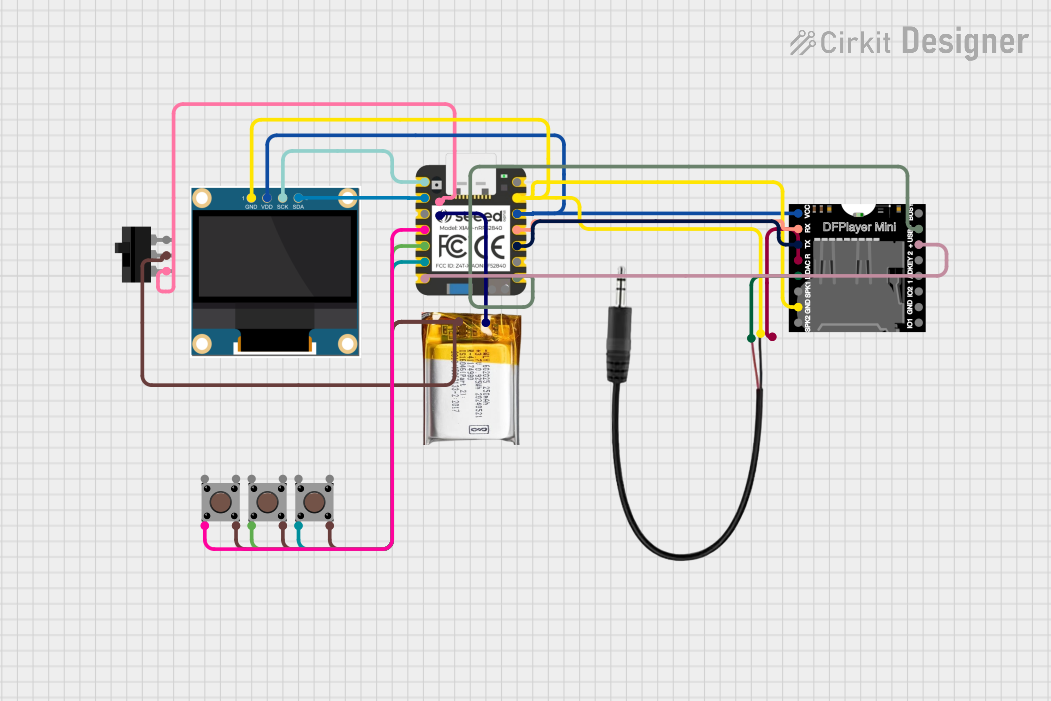
 Open Project in Cirkit Designer
Open Project in Cirkit DesignerExplore Projects Built with DFrobot microSD

 Open Project in Cirkit Designer
Open Project in Cirkit Designer
 Open Project in Cirkit Designer
Open Project in Cirkit Designer
 Open Project in Cirkit Designer
Open Project in Cirkit Designer
 Open Project in Cirkit Designer
Open Project in Cirkit DesignerCommon Applications and Use Cases
- Data logging for sensors in IoT applications
- Storing configuration files or firmware updates
- Recording audio, video, or image data
- Creating portable data storage solutions for embedded systems
- Storing large datasets for machine learning or analytics in edge devices
Technical Specifications
The DFrobot microSD module is designed to be user-friendly and versatile. Below are its key technical specifications:
| Specification | Details |
|---|---|
| Operating Voltage | 3.3V to 5V |
| Communication Protocol | SPI (Serial Peripheral Interface) |
| Supported Card Types | microSD, microSDHC |
| File System Support | FAT16, FAT32 |
| Operating Temperature | -25°C to 85°C |
| Dimensions | 42mm x 24mm x 12mm |
Pin Configuration and Descriptions
The DFrobot microSD module typically has the following pinout:
| Pin | Name | Description |
|---|---|---|
| 1 | VCC | Power supply input (3.3V to 5V) |
| 2 | GND | Ground connection |
| 3 | MISO | Master In Slave Out - SPI data output from the module to the microcontroller |
| 4 | MOSI | Master Out Slave In - SPI data input from the microcontroller to the module |
| 5 | SCK | Serial Clock - SPI clock signal |
| 6 | CS | Chip Select - Used to enable or disable the module during SPI communication |
Usage Instructions
How to Use the DFrobot microSD Module in a Circuit
Connect the Module to Your Microcontroller:
- Connect the
VCCpin to a 3.3V or 5V power source. - Connect the
GNDpin to the ground of your circuit. - Connect the SPI pins (
MISO,MOSI,SCK, andCS) to the corresponding SPI pins on your microcontroller.
- Connect the
Insert a microSD Card:
- Ensure the microSD card is formatted to FAT16 or FAT32.
- Insert the card into the slot on the module.
Initialize the Module in Your Code:
- Use a library such as the Arduino SD library to initialize and communicate with the module.
Important Considerations and Best Practices
- Always ensure the microSD card is properly formatted before use.
- Avoid removing the microSD card while the module is powered to prevent data corruption.
- Use level shifters if your microcontroller operates at 3.3V logic levels and the module is powered at 5V.
- Keep SPI wires as short as possible to reduce noise and ensure reliable communication.
Example Code for Arduino UNO
Below is an example of how to use the DFrobot microSD module with an Arduino UNO:
#include <SPI.h>
#include <SD.h>
// Define the chip select pin for the microSD module
const int chipSelect = 10;
void setup() {
// Initialize serial communication for debugging
Serial.begin(9600);
while (!Serial) {
; // Wait for the serial port to connect (for native USB boards)
}
Serial.println("Initializing SD card...");
// Check if the SD card is present and can be initialized
if (!SD.begin(chipSelect)) {
Serial.println("SD card initialization failed!");
return;
}
Serial.println("SD card initialized successfully.");
// Create or open a file on the SD card
File dataFile = SD.open("example.txt", FILE_WRITE);
// Check if the file opened successfully
if (dataFile) {
dataFile.println("Hello, DFrobot microSD!");
dataFile.close(); // Close the file to save changes
Serial.println("Data written to example.txt");
} else {
Serial.println("Error opening example.txt");
}
}
void loop() {
// Nothing to do here
}
Troubleshooting and FAQs
Common Issues and Solutions
SD Card Initialization Fails:
- Ensure the microSD card is properly inserted into the module.
- Verify that the card is formatted as FAT16 or FAT32.
- Check the wiring between the module and the microcontroller, especially the
CSpin.
Data Corruption or Loss:
- Avoid removing the microSD card while the module is powered.
- Ensure the file is properly closed after writing data.
SPI Communication Issues:
- Verify that the SPI pins on the microcontroller are correctly connected to the module.
- Use shorter wires to reduce noise and improve signal integrity.
FAQs
Q: Can I use this module with a 3.3V microcontroller?
A: Yes, the module supports 3.3V operation. However, ensure that the SPI logic levels match the microcontroller's voltage.
Q: What is the maximum capacity of the microSD card supported?
A: The module supports microSD and microSDHC cards, typically up to 32GB.
Q: Can I use this module with a Raspberry Pi?
A: Yes, the module can be used with a Raspberry Pi. However, the Raspberry Pi has a built-in SD card slot, so this module is usually unnecessary unless additional storage is required.
Q: How do I format the microSD card?
A: Use a tool like the SD Card Formatter (available for free online) to format the card to FAT16 or FAT32.
By following this documentation, you can effectively integrate the DFrobot microSD module into your projects for reliable data storage and retrieval.